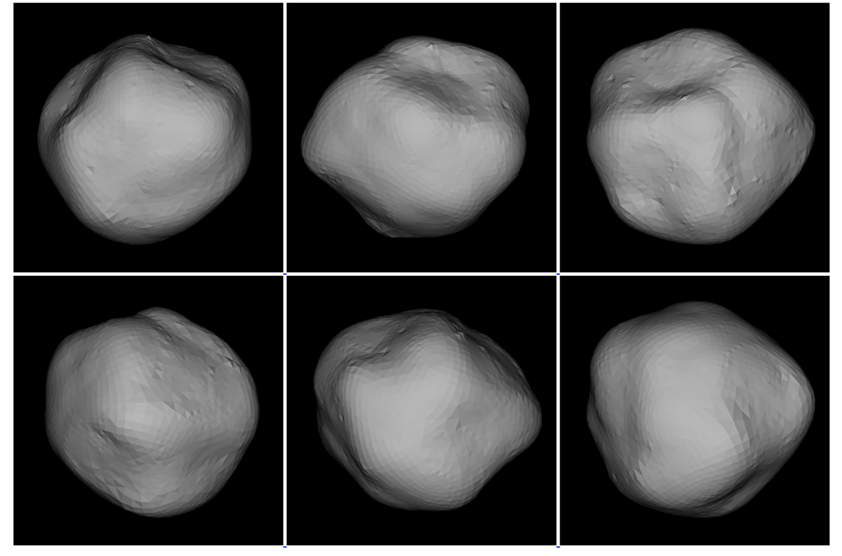Determination of physical parameters of asteroids based on data from space and ground-based telescopes.
- 1Adam Mickiewicz University, Astronomical Observatory Institute, Faculty of Physics, Poland (kacnaj@st.amu.edu.pl)
- 2University Institute of Physics Applied to Sciences and Technologies, Universidad de Alicante, 03690 San Vicente del Raspeig, Alicante, Spain
- 3Konkoly Observatory, Research Center for Astronomy and Earth Sciences, Konkoly Thege 15-17, H-1121 Budapest, Hungary
- 4CSFK, MTA Centre of Excellence, Budapest, Konkoly Thege Miklós út 15-17., H-1121, Hungary
- 5B74, Avinguda de Catalunya 34, 25354, Santa Maria de Montmagastrell (Tàrrega), Spain
The aim of the project is to create spin and shape models of selected main belt asteroids based on dense ground-based lightcurves and
the data from space missions.
Research on asteroids is important for understanding the origin and evolution of the whole Solar System. Studying them will allow us to
better understand the nature of asteroids. Knowledge of the physical properties of
asteroids will also facilitate future space mining. The basis for creating asteroid models are the photomrtric lightcurves, which allows for the
determination of various asteroid parameters. The data used to create these brightness changes come from observations conducted by both: professional
astronomers and amateurs. Such collaboration enables the accumulation of large amounts of data necessary for modeling.
Ground-based observations are also supplemented by data from space missions like TESS anf Gaia.
The main modeling tool is the SAGE program, developed in the Astronomical Observatory Institute at Adam Mickiewicz University.
Using genetic algorithm it enables to create non-convex spin and shape model for asteroids basing solely on lightcurves.
The first source of data is photometric observations of asteroids made by amateur astronomers, who submit the raw observations to the GaiaGOSA
service. Another source is data from the Roman Baranowski Telescope (RBT) located in Arizona, obtained by professional astronomers.
To create an accurate model, the data from multiple
opositions are necessary. Gathered observations display the view of asteroids from different phase angles and
ecliptic coordinates. Thanks to this we observe the amount of light incoming from different geometrical orientation of the object.
Using advanced genetic algorithm SAGE(Dudziński, & Bartczak, 2018) calculates
a good approximation of the three-dimensional shape of the asteroid, as well as its rotation period and the orientation of the rotation axis (pole position).
We have created the models for large main belt asteroids. Thanks to long and dense lightcurves from TESS mission we were able to determine
spin orientation and precise shapes of the asteroids. Moreover, the sparse data from Gaia mission allowed to determine the proper size of asteroids
along rotation axis. We are presenting here the results for 59 Elpis, 96 Aegle and 134 Sophrosyne. In Fig. 1 we show the calculated shape of 96 Aegle.
In the near future precise models for next objects will be determined.

Fig 1: Calculated shape model for 96 Aegle.
Bartczak, P. ; Dudziński, G. , "Shaping asteroid models using genetic evolution (SAGE)", 2018, Monthly Notices of the Royal Astronomical Society, Volume 473, Issue 4, p.5050-506
How to cite: Najda, K., Podlewska-Gaca, E., Bartczak, P., Takacs, N., Kiss, C., Bosh, J. M., Kamiński, K., Kamińska, M., and Polińska, M.: Determination of physical parameters of asteroids based on data from space and ground-based telescopes., Europlanet Science Congress 2024, Berlin, Germany, 8–13 Sep 2024, EPSC2024-340, https://doi.org/10.5194/epsc2024-340, 2024.